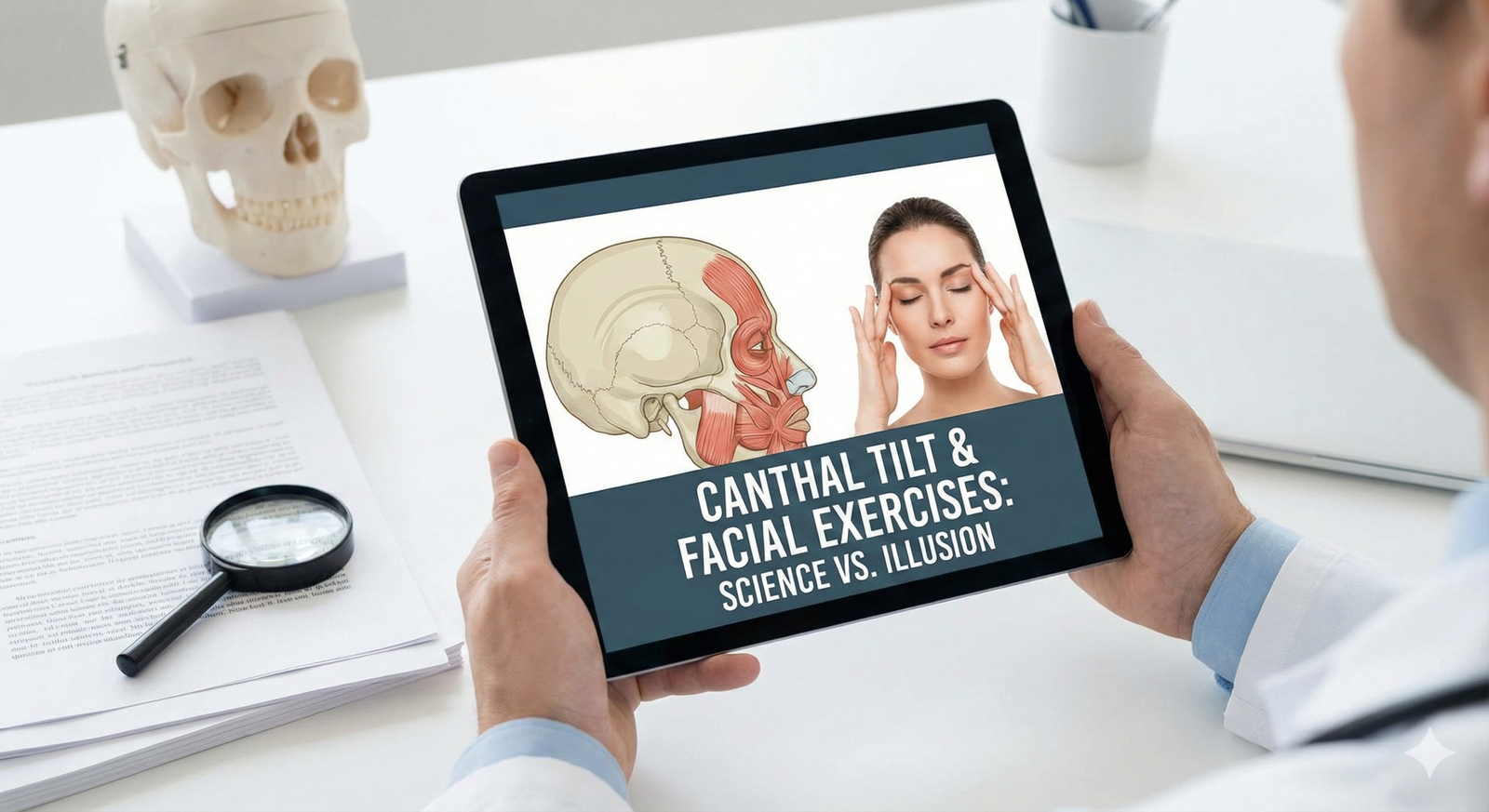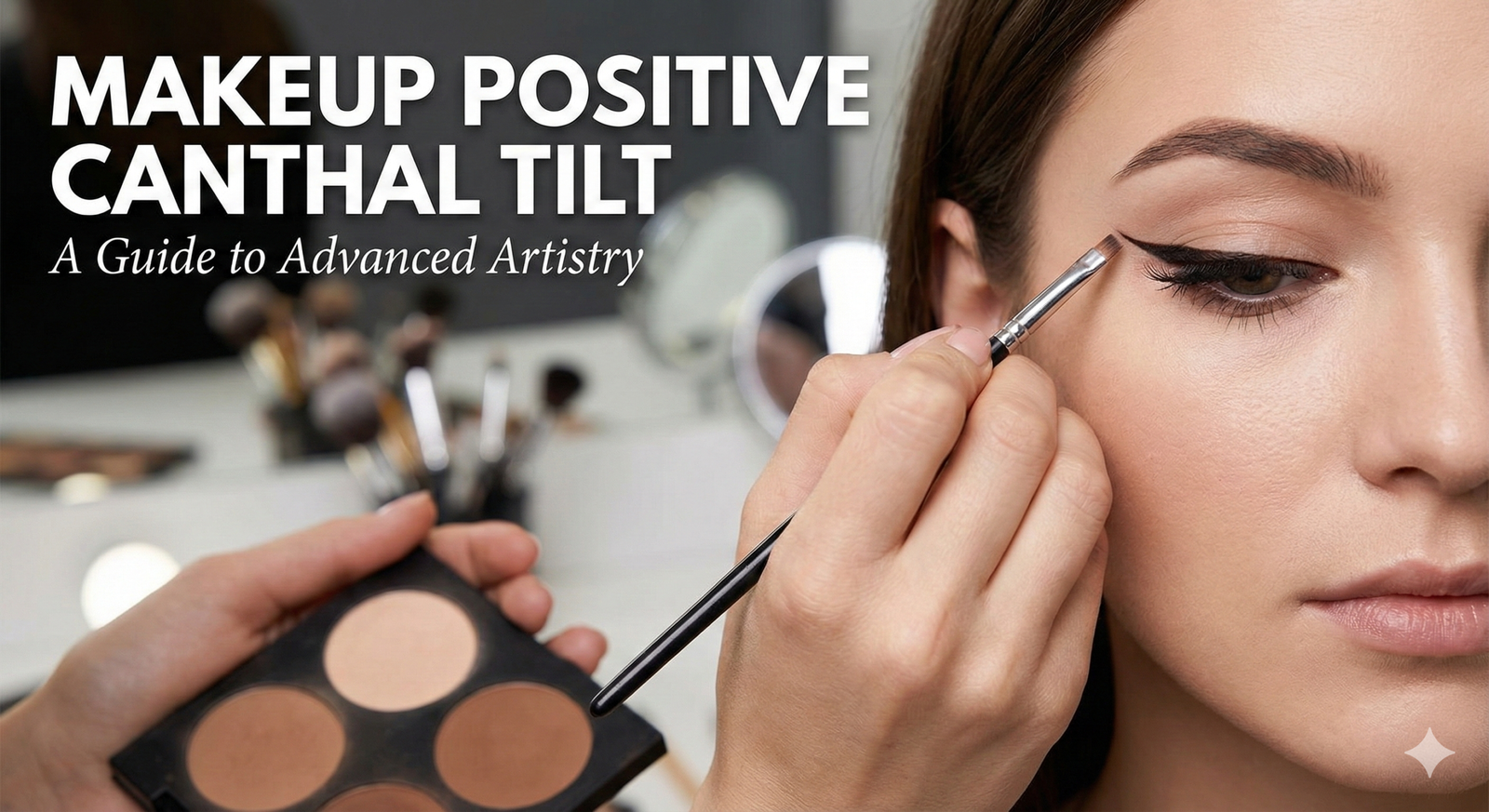Introduction to Dr. Mike Mew and Orthotropics
Dr. Mike Mew is a prominent figure in the realm of orthotropics, a field that diverges significantly from traditional orthodontics. With a deep-rooted passion for promoting natural facial growth, Dr. Mew has dedicated his career to exploring and advancing techniques that foster optimal facial development. His innovative ideas have positioned him as a leading authority, garnering attention and respect from both professionals and patients seeking alternative approaches to facial and dental health.
Orthotropics, the speciality championed by Dr. Mew, emphasizes the importance of correct oral posture and breathing habits from an early age. Unlike traditional orthodontics, which typically focuses on straightening teeth through braces and other mechanical aids, orthotropics advocates for guiding the natural growth of the face. This method aims to address the root causes of dental and facial irregularities, rather than just the symptoms.
The philosophy behind orthotropics is rooted in the belief that proper oral posture—keeping the tongue on the roof of the mouth, maintaining closed lips, and breathing through the nose—can significantly influence facial structure over time. This approach is believed to encourage more balanced and aesthetically pleasing facial features, as well as improved overall health. Dr. Mew’s techniques often involve exercises and lifestyle adjustments designed to promote these healthy habits, thereby supporting natural development.
Dr. Mike Mew’s contributions to orthotropics extend beyond clinical practice; he is also an avid educator and researcher. Through his lectures, workshops, and online presence, he has disseminated valuable knowledge on the principles of orthotropics, reaching a global audience. His work continues to inspire a growing community of practitioners and patients who are eager to explore the benefits of natural facial growth and development.
Understanding Facial Growth and Development
Facial growth and development are complex processes influenced by a combination of genetics, environmental factors, and daily habits. Genetics play a foundational role, determining the potential framework and characteristics of an individual’s face. However, environmental influences and habitual behaviors can significantly alter or enhance these genetic predispositions.
One of the key aspects of facial development is the alignment and function of the jaw. Proper jaw alignment contributes not only to a balanced facial structure but also to overall oral health. When the jaw is correctly positioned, it allows for optimal muscle function and prevents issues such as temporomandibular joint (TMJ) disorders, malocclusion, and even breathing problems. Conversely, poor jaw alignment can lead to asymmetry, discomfort, and long-term dental complications.
Environmental factors, such as nutrition and lifestyle, also play a crucial role. Adequate nutrition during developmental years ensures that the bones and muscles involved in facial growth receive the necessary nutrients for optimal development. Habits such as prolonged thumb-sucking, mouth breathing, and poor posture can negatively impact facial structure, leading to imbalances and less aesthetically pleasing outcomes. For instance, mouth breathing, often caused by nasal obstructions or allergies, can result in elongated facial features and a recessed chin.
Additionally, the importance of muscle function and habitual behaviors cannot be overstated. Regularly engaging in activities that promote proper muscle use, such as chewing with a closed mouth and maintaining good posture, supports the natural development of facial features. Conversely, habits like slouching or resting the chin on the hand can impede balanced growth.
Understanding these factors highlights the importance of a holistic approach to facial development. By considering genetic predispositions alongside environmental and habitual influences, individuals can take proactive steps to support the growth of a balanced and aesthetically pleasing face. Diagrams and illustrations can be invaluable tools for visualizing these concepts, offering clearer insight into how various factors interplay in the development of facial structure.
The Role of Oral Posture in Facial Development
Oral posture, an often overlooked aspect of overall health, plays a significant role in facial development. This concept encompasses the positioning of the tongue, the seal of the lips, and the form of the dental arch. Proper oral posture is crucial not only for dental health but also for the harmonious development of facial features.
The tongue, a major player in oral posture, should ideally rest on the roof of the mouth, gently pressing against the palate. This position encourages the proper expansion of the upper dental arch, which can lead to a broader and more symmetrical facial structure. Conversely, a low tongue posture, where the tongue rests at the bottom of the mouth, can contribute to a narrow dental arch and elongation of the face.
Lip seal is another critical component. Keeping the lips closed, with the teeth lightly touching, helps maintain the correct alignment of the teeth and supports the upper and lower jaws. This practice not only aids in preventing malocclusion but also promotes a balanced facial appearance. Open mouth posture, often associated with mouth breathing, can lead to dental misalignment and negatively impact facial aesthetics.
Maintaining a well-formed dental arch is essential for optimal facial development. A properly aligned dental arch supports the overall structure of the face, providing a foundation for balanced and attractive features. To achieve and maintain a healthy dental arch, it is important to practice good oral habits and seek orthodontic guidance when necessary.
Practical tips to improve oral posture include practicing proper tongue placement by consciously positioning the tongue on the roof of the mouth throughout the day. Additionally, ensuring that the lips are sealed and breathing is done through the nose can significantly enhance oral posture. Simple exercises, such as gently pressing the tongue against the palate and holding for several seconds, can strengthen the muscles involved in maintaining proper oral posture.
Incorporating these practices into daily routines can lead to noticeable improvements in facial development, contributing to a more balanced and aesthetically pleasing appearance. By understanding and applying the principles of oral posture, individuals can take proactive steps towards achieving their ideal facial structure.
Diet and Nutrition for Optimal Facial Growth
Diet and nutrition play a pivotal role in facial development, directly influencing bone and tissue growth. A nutrient-rich diet provides the essential building blocks for the formation and maintenance of facial structures. Integrating specific nutrients into one’s daily intake can significantly promote healthy facial development.
Vitamin D is crucial for facial bone growth and density. It facilitates the absorption of calcium, which is a fundamental component of bone tissue. Foods rich in vitamin D include fatty fish like salmon and mackerel, fortified dairy products, and egg yolks. Additionally, sensible sun exposure can naturally boost vitamin D levels.
Calcium is another vital nutrient for the development and maintenance of strong facial bones. Dairy products such as milk, cheese, and yogurt are excellent sources of calcium. For those who are lactose intolerant or prefer plant-based options, fortified plant milks, leafy greens like kale and broccoli, and almonds can be effective alternatives.
Magnesium works synergistically with calcium and vitamin D to support bone health. It is involved in over 300 biochemical reactions in the body, including those that regulate bone development. Magnesium-rich foods include nuts and seeds, whole grains, legumes, and dark leafy greens.
Incorporating these nutrients into a balanced diet can enhance facial growth and symmetry. Practical dietary recommendations include consuming a variety of fruits and vegetables, lean proteins, whole grains, and healthy fats. Ensuring a diverse intake of food sources helps meet the body’s nutritional needs comprehensively.
Additionally, maintaining hydration is essential for overall tissue health. Water supports the elasticity and resilience of skin and connective tissues, which are integral to the facial structure. Aim for at least eight glasses of water per day, adjusting based on activity levels and environmental conditions.
By prioritizing a nutrient-rich diet and staying hydrated, individuals can foster optimal conditions for facial growth and development. These dietary habits not only contribute to facial aesthetics but also to overall health and well-being.
Breathing Techniques and Their Impact on Facial Structure
Breathing patterns play a pivotal role in facial development, a concept extensively explored by Dr. Mike Mew. Improper breathing, particularly through the mouth, can lead to adverse effects on facial structure. Mouth breathing tends to result in an elongated face, a receding chin, and misaligned teeth. This occurs because mouth breathing often causes the tongue to rest in a lower position, which fails to provide the necessary support to the upper jaw and palate, leading to suboptimal facial growth.
Conversely, nasal breathing promotes a more favorable facial structure. When an individual breathes through the nose, the tongue naturally rests against the roof of the mouth. This position encourages the proper development of the upper jaw and ensures a well-defined, balanced facial profile. In addition to supporting facial growth, nasal breathing filters and humidifies the air, enhancing respiratory health.
To foster better breathing habits, several exercises can be incorporated into daily routines. One effective technique is the tongue posture exercise, which involves pressing the tongue against the roof of the mouth and holding it there for several minutes each day. This helps in training the tongue to maintain the correct position naturally. Another useful practice is the Buteyko breathing method, which focuses on reducing breathing volume and increasing carbon dioxide tolerance. This technique encourages nasal breathing and can improve overall respiratory function.
Moreover, Myofunctional therapy exercises are specifically designed to correct oral posture and promote nasal breathing. These exercises often include activities like chewing gum on both sides of the mouth evenly, practicing proper swallowing techniques, and engaging in targeted facial muscle exercises. Consistent practice of these techniques can lead to significant improvements in facial structure and respiratory health.
Adopting these breathing techniques can yield long-term benefits not only for facial aesthetics but also for overall well-being. By understanding and implementing these practices, individuals can achieve optimal facial development and enhanced respiratory health.
The Importance of Proper Swallowing Function
Proper swallowing function plays a pivotal role in facial development, particularly during the formative years of growth. When swallowing correctly, the tongue presses against the roof of the mouth, creating a natural force that promotes proper alignment and structure of the facial bones. This pressure helps in the forward and upward growth of the maxilla, contributing to a more defined and harmonious facial profile.
Common swallowing disorders, such as tongue thrusting or improper tongue posture, can significantly impact facial growth. Tongue thrusting occurs when the tongue pushes against or between the teeth during swallowing, leading to open bites, misaligned teeth, and altered jaw development. Over time, these irregularities can result in a less aesthetically pleasing facial structure and potential functional issues, such as speech impediments or breathing difficulties.
To achieve and maintain correct swallowing patterns, it is essential to be mindful of tongue posture and engage in exercises that reinforce proper habits. One effective exercise is the “Mewing” technique, popularized by Dr. Mike Mew, which involves consciously placing the tongue against the roof of the mouth and maintaining this position throughout the day. This practice not only aids in correct swallowing but also encourages proper facial growth and alignment.
Other helpful exercises include the “Chewing Gum” technique, which strengthens the muscles involved in swallowing and promotes proper tongue posture. Additionally, practicing swallowing with the lips closed and teeth slightly apart can help train the muscles to function correctly. Consistency and mindfulness are key to these exercises, as habitual reinforcement is necessary to achieve lasting results.
For those experiencing persistent swallowing difficulties, consulting a professional, such as an orthodontist or speech therapist, can provide personalized guidance and support. These professionals can offer tailored exercises and techniques to address specific concerns, ensuring optimal facial development and overall oral health.
Orthotropic Appliances and Their Uses
Orthotropic appliances play a pivotal role in the field of orthodontics, especially in the context of achieving optimal jaw alignment and promoting natural facial development. These devices, which are central to the orthotropic methodology advocated by Dr. Mike Mew, are designed not merely to straighten teeth but to guide the growth of the jaws and facial structure into a more harmonious and functional alignment.
One of the primary orthotropic appliances utilized is the Myobrace system. This appliance is designed to correct poor oral habits while aligning the teeth and jaws. The Myobrace works by exerting light, continuous pressure that encourages the jaws to grow forward and the teeth to move into their correct positions naturally. Patients using the Myobrace often experience improvements in breathing, swallowing, and overall facial aesthetics.
Another notable device is the Biobloc appliance, which is specifically designed for younger patients. The Biobloc aims to correct underdeveloped jaws by encouraging forward growth and proper tongue posture. It is particularly effective in treating cases of Class II malocclusion, where the lower jaw is significantly recessed. By promoting a more pronounced and forwardly positioned lower jaw, the Biobloc not only enhances facial balance but also improves airway function, which can significantly impact overall health.
Dr. Mike Mew also employs the use of palate expanders, which are crucial in addressing issues related to narrow upper jaws. Palate expanders work by gradually widening the upper jaw, creating more space for the teeth to align properly and improving nasal breathing. This expansion can lead to a more symmetrical facial appearance and reduce the risk of dental crowding.
The expected outcomes of using these orthotropic appliances are multifold. Patients typically experience not only an improvement in dental alignment but also a more balanced facial profile. Enhanced airway function, better posture, and improved oral habits are additional benefits that contribute to overall health and well-being. By addressing the root causes of misalignment and poor facial development, these appliances offer a holistic approach to achieving a model face, as advocated by Dr. Mike Mew.
Success Stories and Case Studies
Dr. Mike Mew’s techniques have garnered significant attention due to their transformative impact on individuals seeking to achieve a model face. Real-life success stories and case studies vividly demonstrate the effectiveness of these orthotropic methods. These narratives not only highlight remarkable physical changes but also emphasize improved overall health and well-being.
One notable success story is that of Sarah, a young woman who struggled with misaligned teeth and a recessed jaw. Through consistent application of Dr. Mew’s techniques, Sarah experienced a dramatic improvement in her facial structure. Before-and-after photos reveal a significant enhancement in her jawline and overall facial symmetry. Sarah’s testimonial underscores the profound impact of these techniques, citing increased confidence and a renewed sense of self-esteem.
Another compelling case study involves John, a teenager who faced issues related to poor posture and mouth breathing. By adopting Dr. Mew’s orthotropic practices, John witnessed a remarkable transformation in his facial development. Detailed case studies document the gradual improvement in John’s facial features, including a more defined jawline and improved dental alignment. John’s experience highlights the holistic benefits of these techniques, including enhanced breathing patterns and better posture.
Additionally, the story of Emily, a young girl with a narrow palate and crowded teeth, showcases the efficacy of Dr. Mew’s methods. Emily’s parents opted for orthotropic intervention to address these concerns. Over time, Emily’s facial structure underwent significant positive changes, as evidenced by before-and-after images. Her case study illustrates how orthotropics can correct dental and skeletal issues, leading to a more aesthetically pleasing and functionally efficient facial structure.
These success stories and case studies collectively affirm the positive impact of Dr. Mike Mew’s techniques. They demonstrate that orthotropics is not just about achieving a model face but also about fostering better health and improved quality of life. The transformative results experienced by individuals like Sarah, John, and Emily serve as powerful testaments to the effectiveness of these innovative practices.




